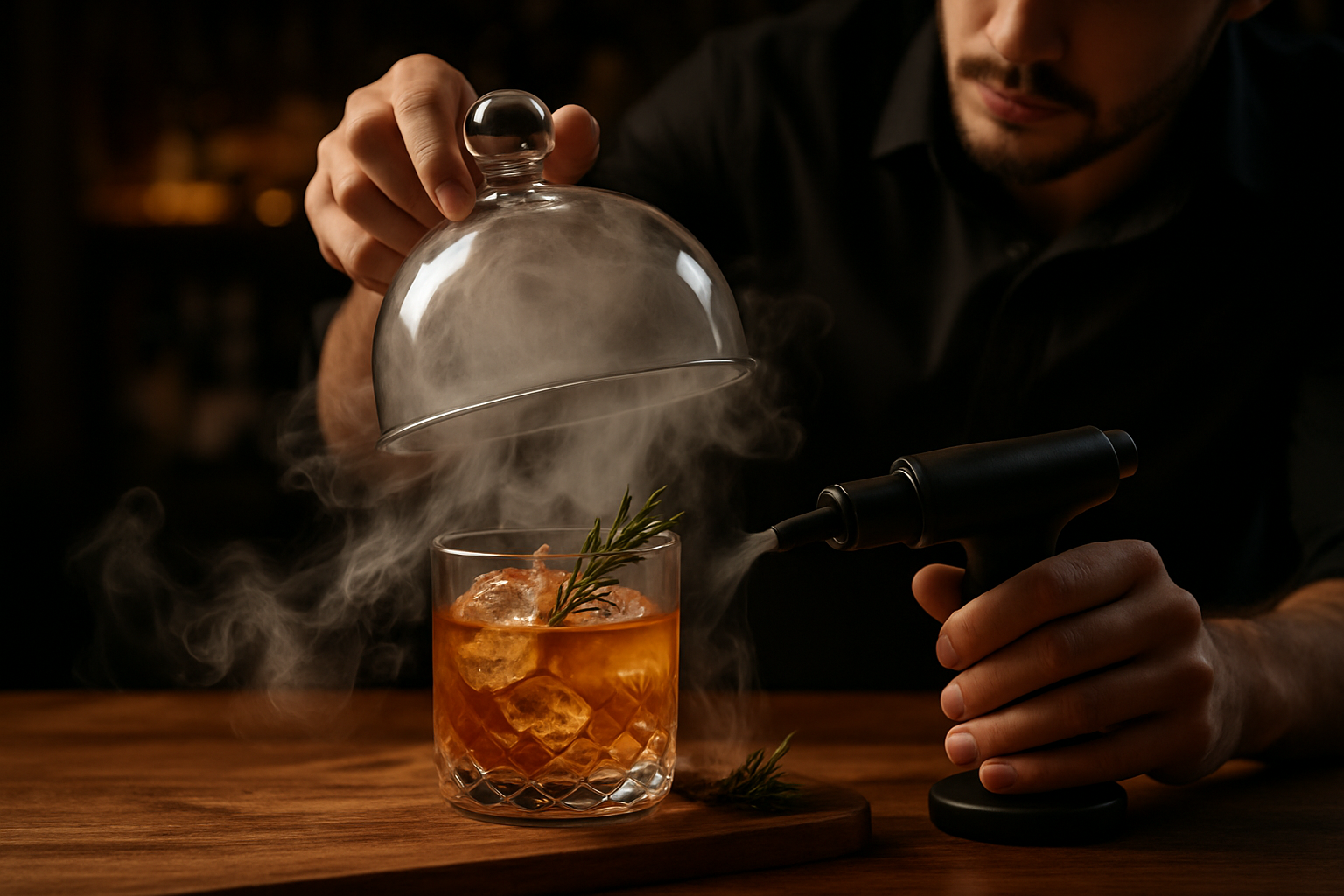Culinary Alchemy: The Art of Smoke-Infused Cocktails
In the ever-evolving world of mixology, a new trend is captivating cocktail enthusiasts and bartenders alike. Smoke-infused cocktails are bringing a touch of theater and depth to the drinking experience, transforming familiar libations into sensory adventures. This innovative technique combines the age-old practice of smoking with modern mixology, resulting in drinks that tantalize both the palate and the eyes.

The type of wood or herb used for smoking plays a crucial role in the final flavor. Hickory imparts a bold, bacon-like essence, while applewood offers a sweeter, fruitier note. Herbs like rosemary or thyme can add aromatic complexity. The smoke not only adds flavor but also changes the mouthfeel of the cocktail, creating a more rounded and full-bodied experience.
Tools and Techniques for Smoke Infusion
To create smoke-infused cocktails, bartenders employ various tools and methods. The most common is the smoking gun, a handheld device that burns wood chips or herbs and directs the smoke into a container with the drink. Another technique involves using a smoke-filled cloche or dome, which is dramatically lifted at the table to release the aromatic smoke.
For a more subtle approach, some mixologists pre-smoke individual ingredients like syrups or garnishes. This method allows for more control over the intensity of the smoke flavor. Advanced techniques include fat-washing spirits with smoked oils or using liquid smoke in minute quantities for a consistent flavor profile.
Pairing Smoke with Spirits
Not all spirits pair well with smoke, and finding the right balance is key to a successful smoke-infused cocktail. Dark spirits like whiskey, rum, and mezcal naturally complement smoky flavors, enhancing their existing complexity. However, lighter spirits can also benefit from smoke infusion when paired thoughtfully.
For instance, a gin-based cocktail might use a delicate applewood smoke to enhance its botanical notes without overpowering them. Vodka, being relatively neutral, can serve as a blank canvas for bolder smoke flavors. The key is to consider the drink’s other ingredients and ensure the smoke complements rather than dominates the overall flavor profile.
Beyond Wood: Innovative Smoking Materials
While wood chips are the most common smoking material, innovative bartenders are experimenting with a wide range of substances to create unique flavor profiles. Tea leaves, spices, and even hay are being used to impart distinctive aromas and tastes to cocktails.
Cinnamon smoke can add warmth to a winter cocktail, while lavender smoke might complement a floral gin drink. Some mixologists are even using unconventional materials like leather or tobacco for ultra-niche flavor experiences. This experimentation opens up a world of possibilities for creating signature drinks that stand out in a crowded market.
The Future of Smoke in Mixology
As the trend of smoke-infused cocktails continues to grow, we can expect to see more innovation in both techniques and flavor combinations. Some bars are already experimenting with molecular gastronomy techniques to create smoke-flavored foams or gels, pushing the boundaries of texture and presentation.
There’s also a growing interest in regional and terroir-specific smoking materials, with bartenders sourcing local woods and herbs to create drinks that reflect their geographical location. This approach not only results in unique flavors but also ties into the broader trend of locavore dining and drinking experiences.
Useful Tips & Facts
• Always use food-grade wood chips or herbs for smoking cocktails
• Start with a light smoke and increase intensity gradually to avoid overpowering the drink
• Chill glasses before smoking to help the smoke cling to the surface
• Experiment with different smoke and spirit combinations to find your signature blend
• Consider the drink’s temperature; cold drinks tend to hold smoke flavors better than warm ones
In conclusion, smoke-infused cocktails represent a fascinating fusion of traditional smoking techniques and modern mixology. By understanding the science behind smoke infusion and experimenting with different materials and methods, bartenders and home enthusiasts alike can create drinks that are not just beverages, but multi-sensory experiences. As this trend continues to evolve, it promises to bring new dimensions to the world of cocktails, challenging our perceptions and delighting our senses in equal measure.




